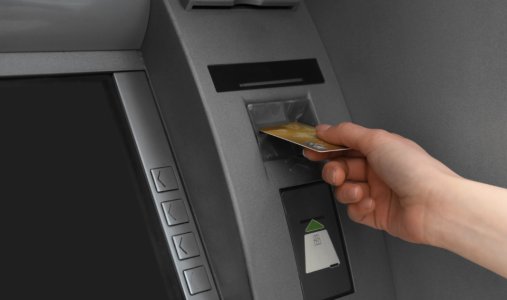Find out Why Finding Fee-Free ATMs Has Suddenly Become a Huge Hassle Since Their Triumph in 2017!
By
- Replies 7
In 2017, Australians celebrated a significant win for consumers when banks decided to scrap the pesky ATM fees that had long been a thorn in the side of anyone needing to withdraw cash from a machine not owned by their bank. It seemed like a step towards a more customer-friendly banking experience. However, fast forward to today, and the landscape has drastically changed, leaving many Australians wondering where all the ATMs have gone.
The reality is that finding an ATM, let alone one that doesn't charge a fee, has become a Herculean task. Regulatory data reveals a startling decline of almost 60% in bank-owned ATM numbers since the fee elimination. This has created a vacuum that third-party ATMs have filled, often charging around $3 per withdrawal. This shift has significant implications, especially for those who can least afford it: the less affluent, who tend to withdraw smaller amounts more frequently, and residents of remote areas who are now finding themselves in a cash-access desert.
The situation is not just an inconvenience but a social equity issue. Mark Humphery-Jenner, an associate professor at UNSW, highlights the stark reality of this problem, noting the inconvenience he faced in an inner-city suburb and pointing out that the issue is 'exponentially worse' in rural locations. The closure of bank branches and ATMs has inadvertently shifted the responsibility of cash distribution to supermarkets and post offices, which are not always accessible and often impose withdrawal limits.
The responsibility of banks to provide convenient cash access is a point of contention. Humphery-Jenner argues that if banks are willing to take individuals' cash deposits, they should be equally willing to facilitate withdrawals. He suggests that this should be a mandated part of their banking license, not just a social expectation.
The decline in ATMs coincided with a rise in debit card usage, which was marketed as a more convenient way to access funds. However, this shift has led to a complex system of card charges, creating a lucrative revenue stream for banks and payment providers. The issue has gained political traction, especially with rising cost-of-living pressures, prompting the Reserve Bank to expedite its review of the payments system.
Despite the decline in cash usage, a significant portion of the population, including many older Australians, those with limited or no internet access, people on low incomes, and those with disabilities, still rely on physical currency. Jason Bryce from Cash Welcome, an advocacy group for cash usage, emphasises that banks have an economic responsibility to maintain this national economic infrastructure. He insists that banks must ensure easy, local, and ideally fee-free access to cash, highlighting its importance during emergencies when digital systems may fail.
Some banks, like Macquarie and ING, offer limited or full ATM fee refunds, and others, such as Westpac and ANZ, have negotiated fee waivers with certain ATM networks. However, these arrangements are not universal, and many customers find themselves paying fees at third-party ATMs.
The CBA maintains that it has the largest bank-owned ATM network in Australia and participates in a program to ensure fee-free withdrawals in certain remote Indigenous communities. Westpac also claims that its tie-up with the ATMX network provides customers with access to the 'largest combined fleet of fee-free ATMs in the country.'
As we navigate this changing landscape, it's clear that the triumph of 2017 has given way to new challenges. The push towards a cashless society may seem inevitable, but it's essential to consider the needs of all Australians, ensuring equitable access to cash for those who depend on it. The conversation around ATM availability and fees is far from over, and it's a topic that will continue to impact the wallets and lives of many.
 We at the Seniors Discount Club invite you to share your experiences and thoughts on this issue. Have you struggled to find a fee-free ATM? How has this affected your access to cash? Join the discussion in the comments below and let us know how this trend is impacting you.
We at the Seniors Discount Club invite you to share your experiences and thoughts on this issue. Have you struggled to find a fee-free ATM? How has this affected your access to cash? Join the discussion in the comments below and let us know how this trend is impacting you.
The reality is that finding an ATM, let alone one that doesn't charge a fee, has become a Herculean task. Regulatory data reveals a startling decline of almost 60% in bank-owned ATM numbers since the fee elimination. This has created a vacuum that third-party ATMs have filled, often charging around $3 per withdrawal. This shift has significant implications, especially for those who can least afford it: the less affluent, who tend to withdraw smaller amounts more frequently, and residents of remote areas who are now finding themselves in a cash-access desert.
The situation is not just an inconvenience but a social equity issue. Mark Humphery-Jenner, an associate professor at UNSW, highlights the stark reality of this problem, noting the inconvenience he faced in an inner-city suburb and pointing out that the issue is 'exponentially worse' in rural locations. The closure of bank branches and ATMs has inadvertently shifted the responsibility of cash distribution to supermarkets and post offices, which are not always accessible and often impose withdrawal limits.
The responsibility of banks to provide convenient cash access is a point of contention. Humphery-Jenner argues that if banks are willing to take individuals' cash deposits, they should be equally willing to facilitate withdrawals. He suggests that this should be a mandated part of their banking license, not just a social expectation.
The decline in ATMs coincided with a rise in debit card usage, which was marketed as a more convenient way to access funds. However, this shift has led to a complex system of card charges, creating a lucrative revenue stream for banks and payment providers. The issue has gained political traction, especially with rising cost-of-living pressures, prompting the Reserve Bank to expedite its review of the payments system.
Despite the decline in cash usage, a significant portion of the population, including many older Australians, those with limited or no internet access, people on low incomes, and those with disabilities, still rely on physical currency. Jason Bryce from Cash Welcome, an advocacy group for cash usage, emphasises that banks have an economic responsibility to maintain this national economic infrastructure. He insists that banks must ensure easy, local, and ideally fee-free access to cash, highlighting its importance during emergencies when digital systems may fail.
Some banks, like Macquarie and ING, offer limited or full ATM fee refunds, and others, such as Westpac and ANZ, have negotiated fee waivers with certain ATM networks. However, these arrangements are not universal, and many customers find themselves paying fees at third-party ATMs.
The CBA maintains that it has the largest bank-owned ATM network in Australia and participates in a program to ensure fee-free withdrawals in certain remote Indigenous communities. Westpac also claims that its tie-up with the ATMX network provides customers with access to the 'largest combined fleet of fee-free ATMs in the country.'
As we navigate this changing landscape, it's clear that the triumph of 2017 has given way to new challenges. The push towards a cashless society may seem inevitable, but it's essential to consider the needs of all Australians, ensuring equitable access to cash for those who depend on it. The conversation around ATM availability and fees is far from over, and it's a topic that will continue to impact the wallets and lives of many.
Key Takeaways
- Bank-owned ATM numbers have significantly decreased since 2017, leading to a rise in third-party-operated machines that charge fees for withdrawals.
- The decline in freely available ATMs disproportionately affects less affluent individuals and those in remote locations, creating inequity in cash access.
- Despite the trend towards a cashless society, many still rely on cash, including older Australians, those without internet access, and people on low incomes.
- Banks are facing criticism for not maintaining sufficient ATM infrastructure, raising concerns about their economic and social responsibilities to provide fee-free cash access.








